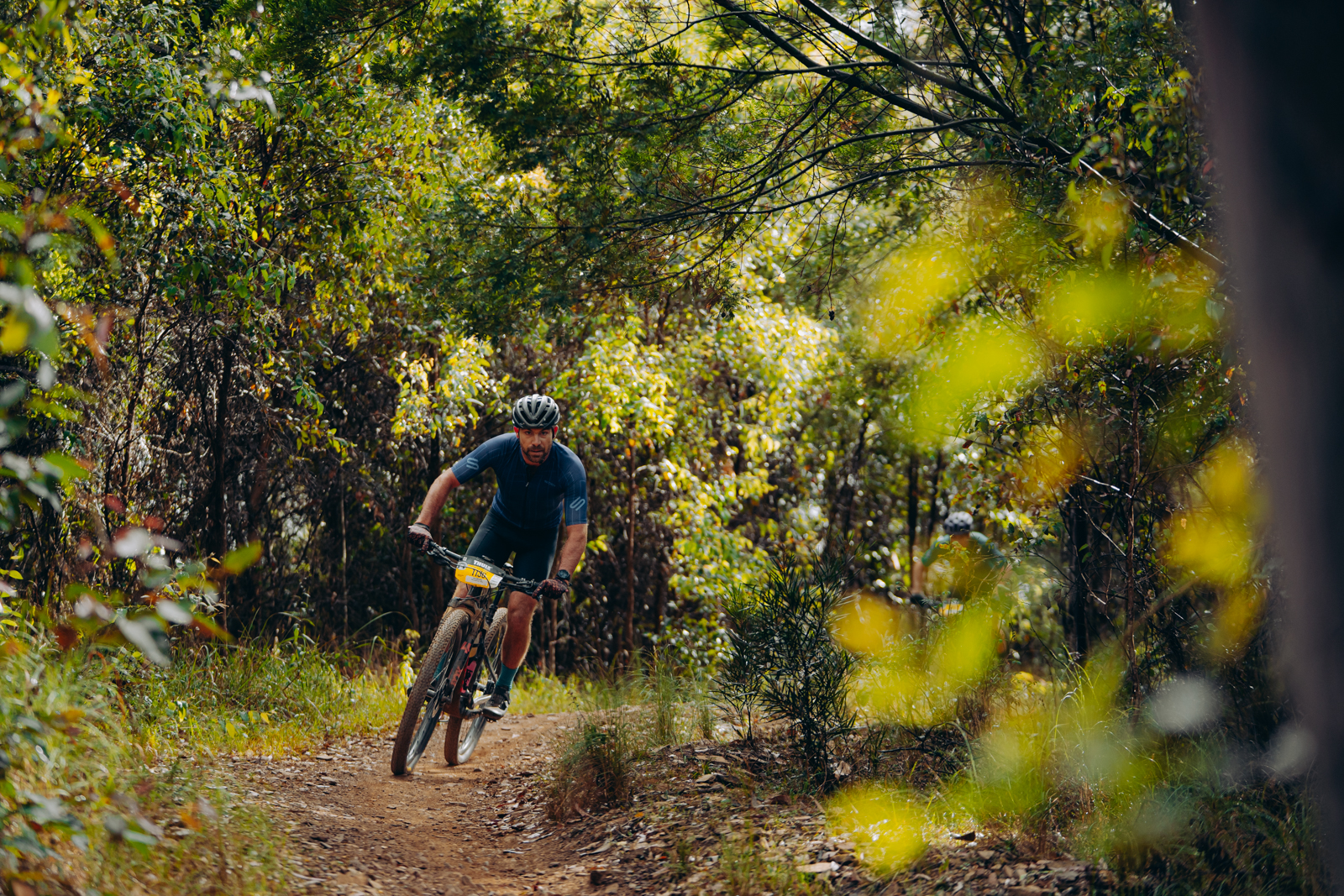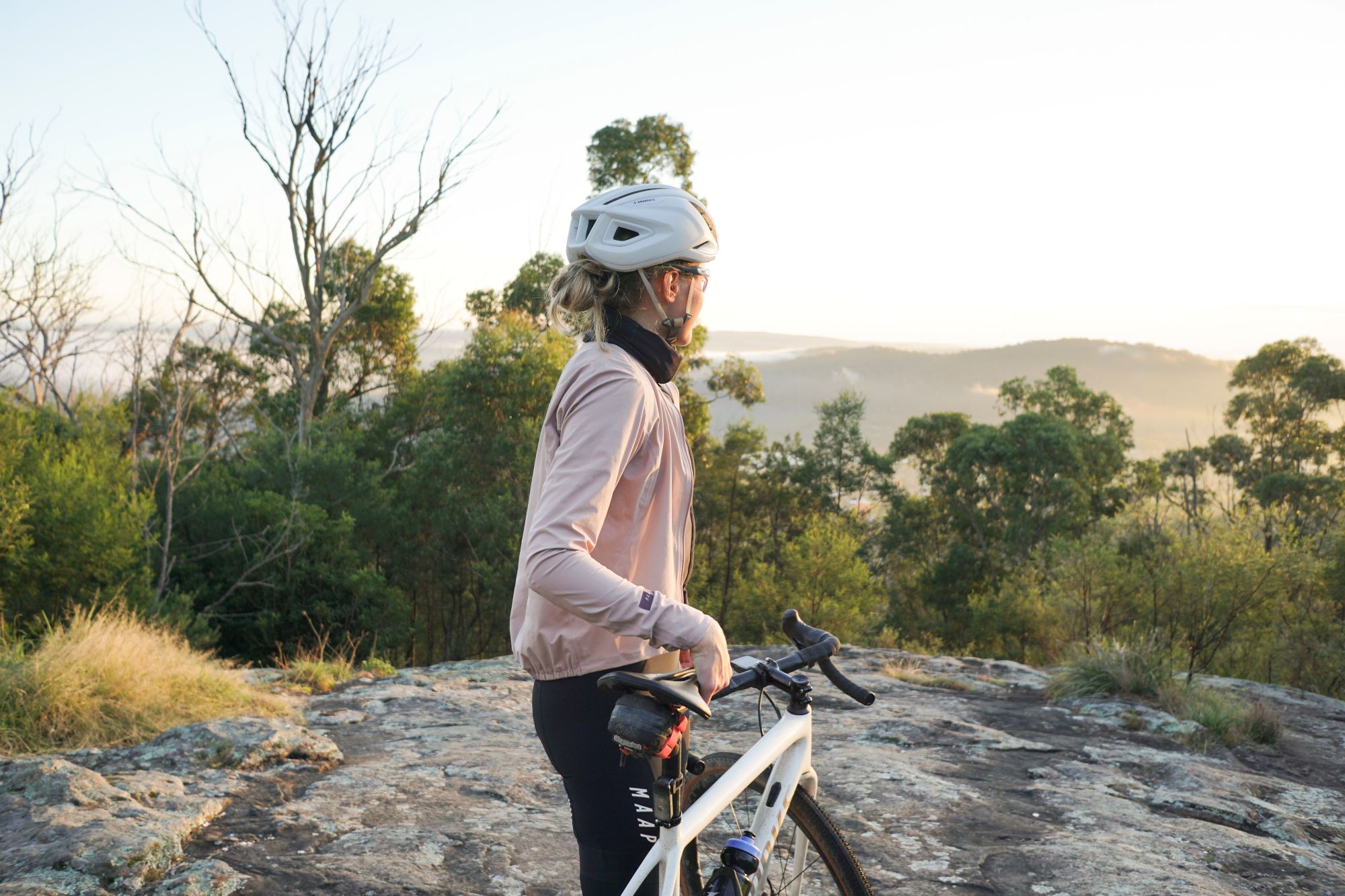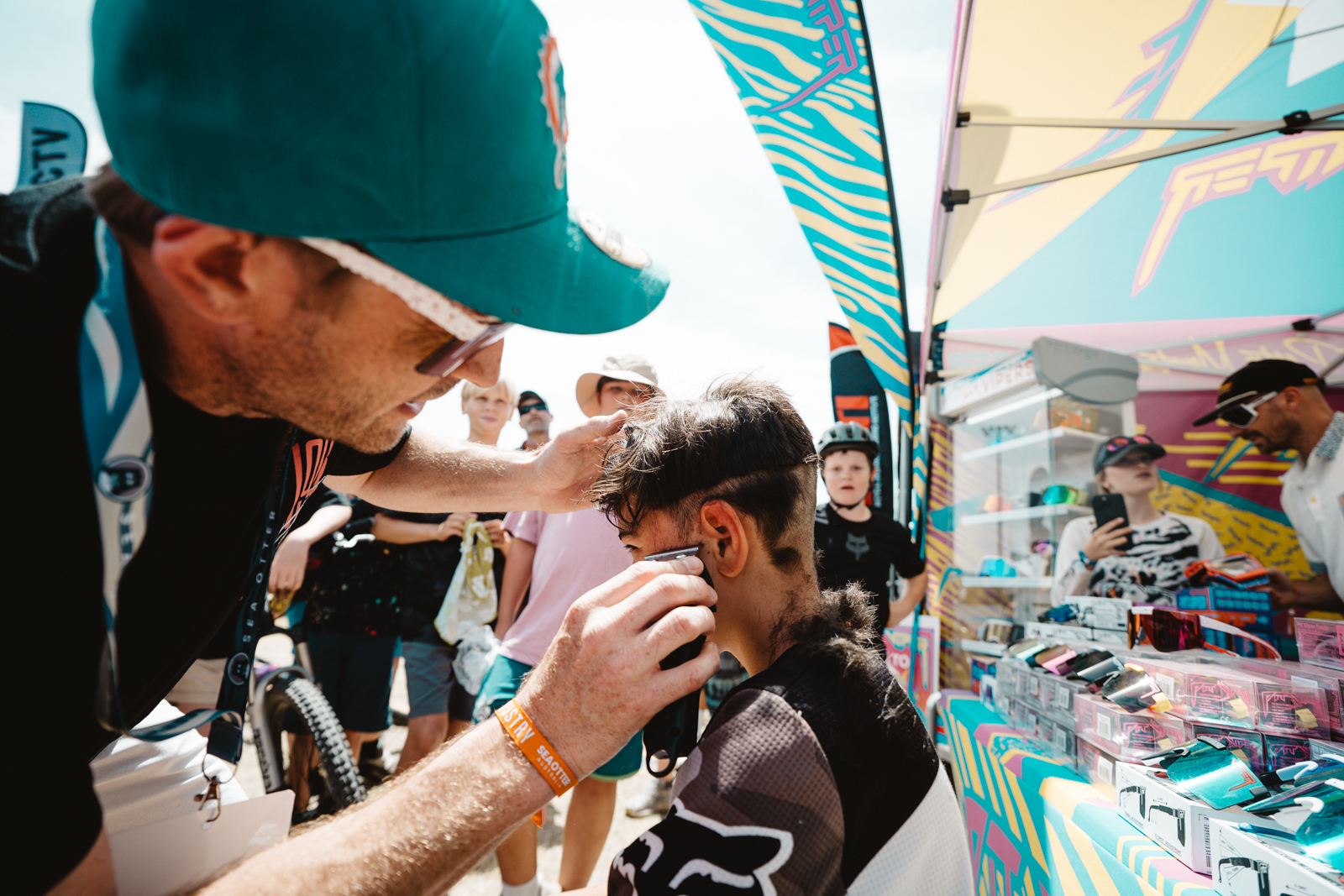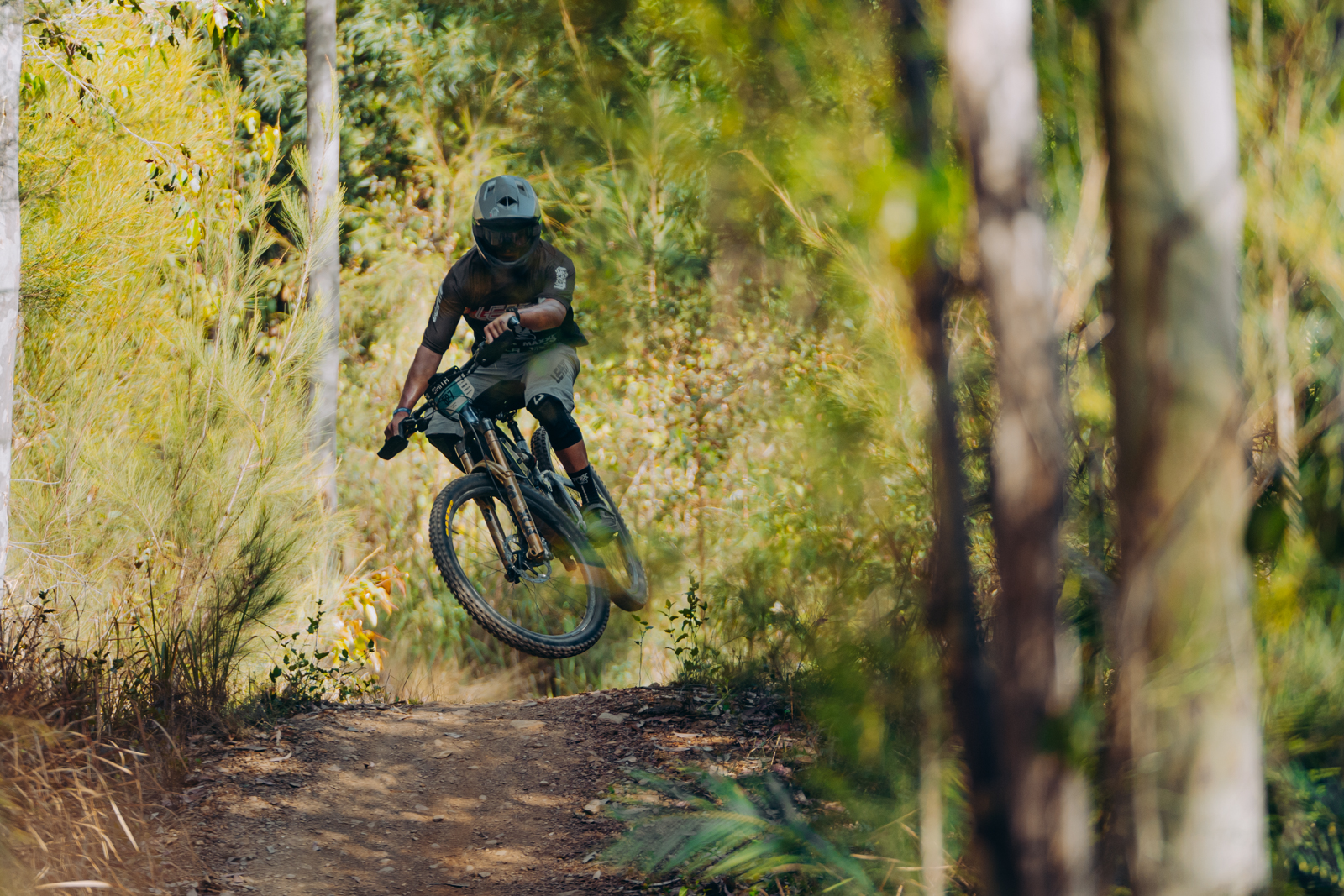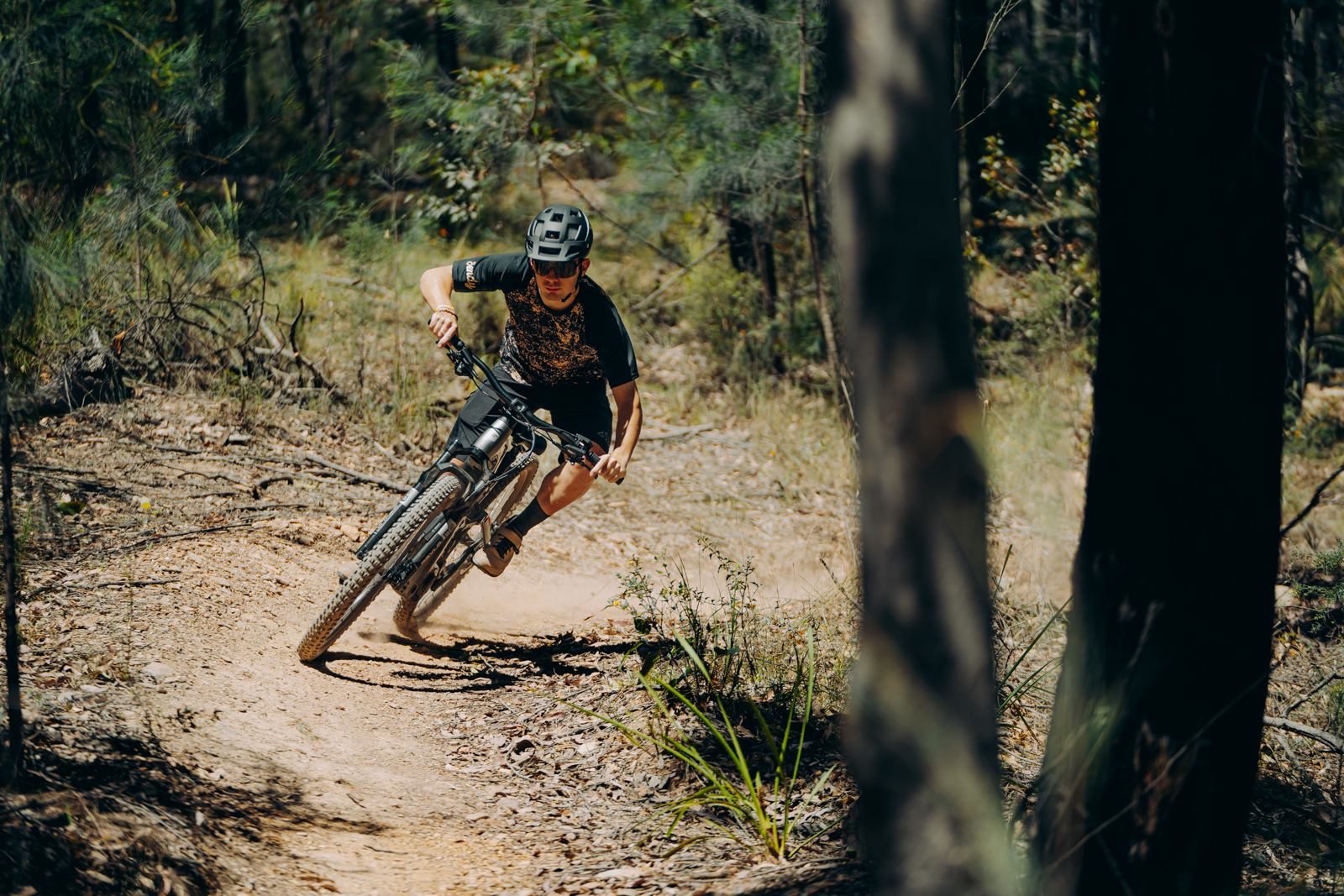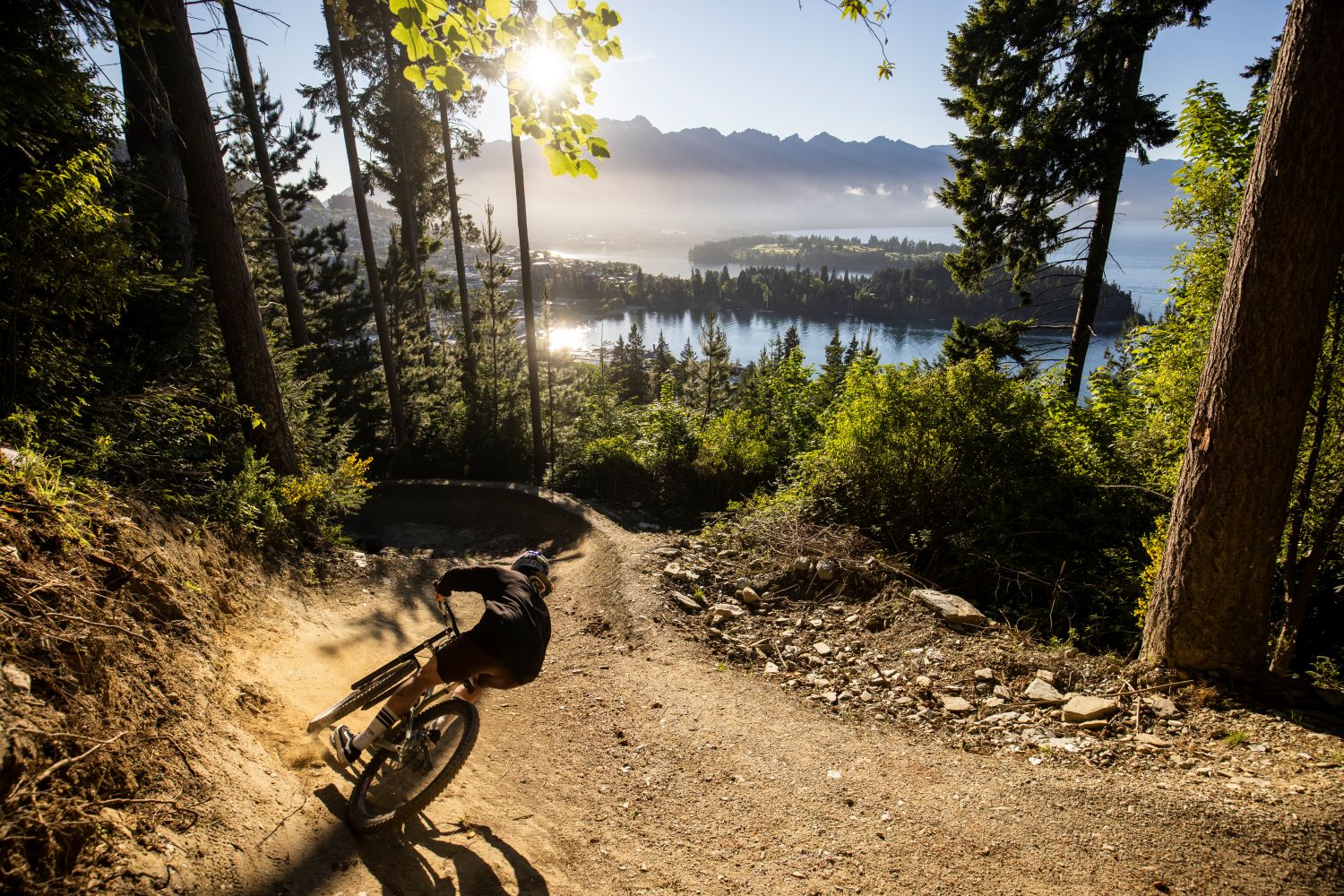Yoga: Chest openers for cyclists
You love riding, but wouldn’t it be great if you didn’t have to experience burn and tension in your shoulders, neck and upper back?
By Kylie Terraluna Photos Jamie Cleary
Yoga’s chest opening postures are designed to counter balance that ‘hunched-over effect’ cycling has on your body – to realign your posture by stretching you back out again and releasing you from pain. You’ve possibly spent long periods bent over to ride, so it makes sense to hold some restorative, releasing poses to get some relief.
This sequence can be strong, yet blissfully relaxing. Enjoy the repose, and next time you take to your bike, look forward to the counter-work that this well sequenced yoga practice brings.
Set up
This sequence is designed to be performed well away from the bike, preferably at home where household props are fully available. You will need a thick blanket, or a large beach towel, and possibly another two rolled up blankets/towels. You also need a yoga mat, a bolster or firm cushions, a strap, and a chair with an open back.
Practice this sequence in a warm place, free of distractions, and set aside some time for healing, balance and freedom.
1. Reclining bound angle

Place your three-fold blanket to act as a pillow onto the bolster or long firm cushions. Sit, with buttocks against the back of bolster. Bend your knees to place the soles of your feet together. Loop the strap around hips near the sacrum, place over the top of your thighs and under ankles. Pull the strap to a snug position. Gently recline over the cushion on an out-breath, adjusting the blanket to support your head and neck.
Allow hands to rest at your sides, palms facing up. Relax. Soften into the support of the props, allowing the muscles to let go. Close your eyes. Breathe. If your hips become uncomfortable, place a rolled up towel or blanket underneath the outside edge of each knee and thigh evenly for support, then rest back down. Relax in the pose for three minutes if possible.
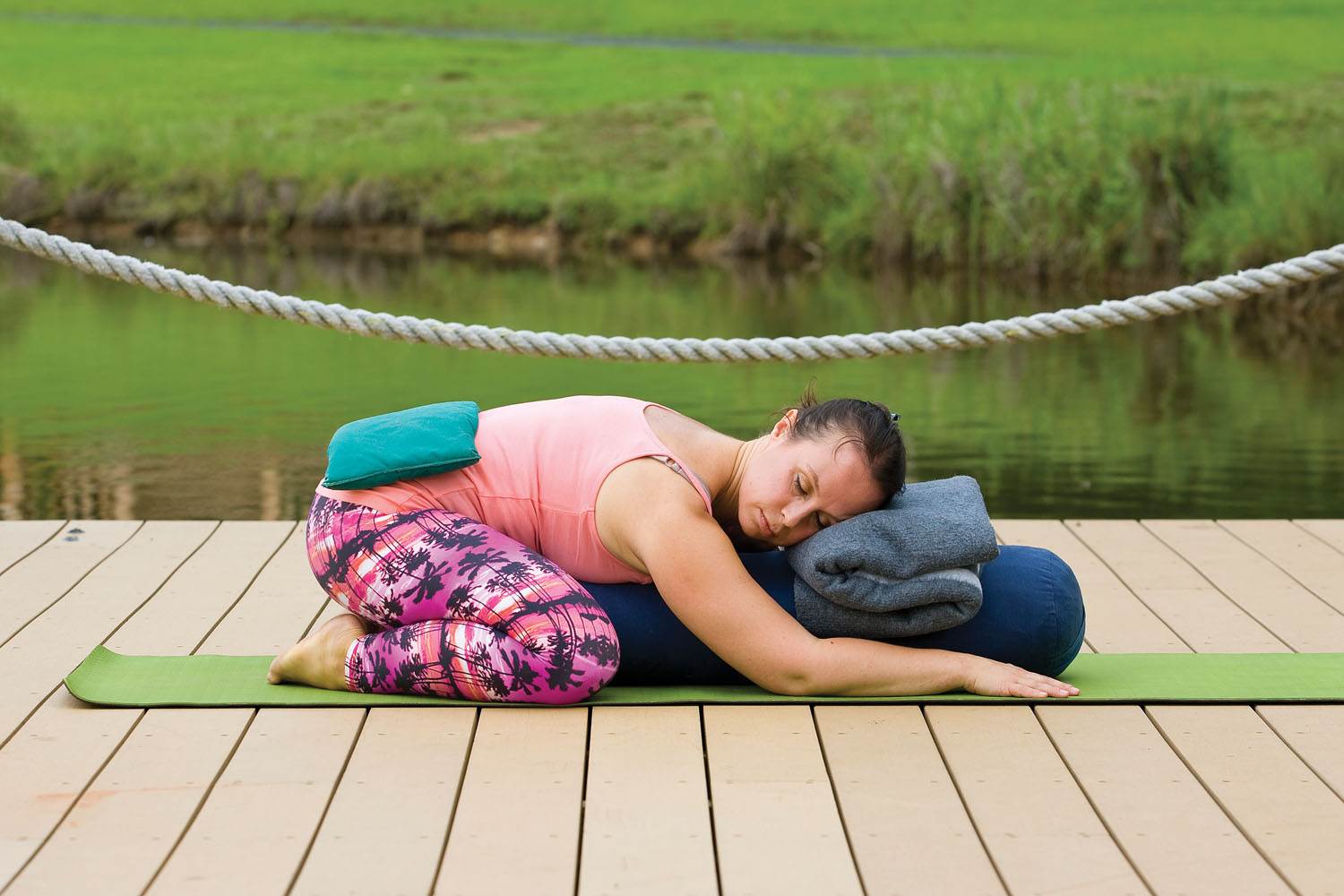
This is a counter-pose to the previous position. Sitting up, remove the strap and kneel to face the bolster. Move your knees apart, to the width of the mat, and bring your big toes to touch behind you. Move the bolster closer in. Pivot from your hips, fold forward and rest your body to hug the bolster. Turn your head to one side, closing your eyes, and relax. After a while, turn your head to the other side and rest again.
3. Intense forward stretch
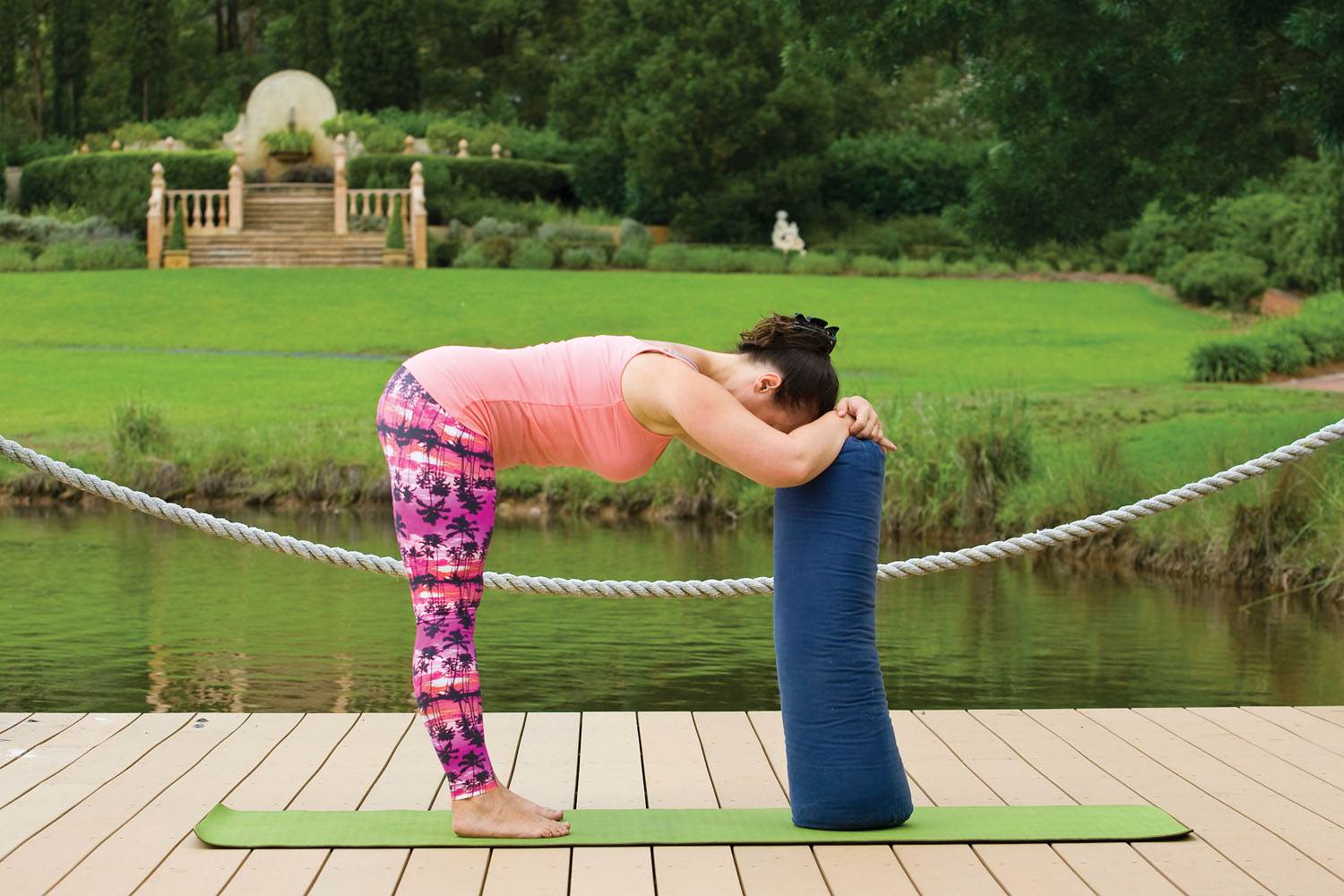 This pose accesses the upper back release. Standing feet hip-width distance apart, lift the kneecaps. Inhale. Exhale bending forward, placing forehead on bolster, arms resting on top. Add extra blankets for increased bolster height as needed. Tilt forward so your hips, knees and ankles are stacked. Breathe and relax. Hold the pose for a few minutes if you can, softening behind the back of the knees and releasing tension from all areas of the body. Gently release back up to standing.
This pose accesses the upper back release. Standing feet hip-width distance apart, lift the kneecaps. Inhale. Exhale bending forward, placing forehead on bolster, arms resting on top. Add extra blankets for increased bolster height as needed. Tilt forward so your hips, knees and ankles are stacked. Breathe and relax. Hold the pose for a few minutes if you can, softening behind the back of the knees and releasing tension from all areas of the body. Gently release back up to standing.
4. Inverted staff pose
 Place bolster in front of an open-backed chair lengthways. Fold the yoga mat over the chair for support. Climb through the back of the chair. Sitting, facing the back of the chair, hold on to the sides of the chair as you slide your hips towards the back. Rest buttock onto back edge of the chair and middle of the back pressing down on the front edge of the chair. Allow the crown of your head to rest lightly on bolster. Straighten legs. Hold pose for a few minutes. Coming out of pose, sit upright for one minute before climbing out of the chair.
Place bolster in front of an open-backed chair lengthways. Fold the yoga mat over the chair for support. Climb through the back of the chair. Sitting, facing the back of the chair, hold on to the sides of the chair as you slide your hips towards the back. Rest buttock onto back edge of the chair and middle of the back pressing down on the front edge of the chair. Allow the crown of your head to rest lightly on bolster. Straighten legs. Hold pose for a few minutes. Coming out of pose, sit upright for one minute before climbing out of the chair.

Caution: When you first perform this pose make sure you have someone with you to spot you so you don’t fall, otherwise omit it from the sequence. Do not perform this pose if you have high blood pressure, are pregnant or have eye problems such as glaucoma or detached retina.
5. Supported bridge pose
Place the bolster long-ways on your yoga mat and fold the blankets to the length and width of an additional bolster as shown. Ensure there is plenty of mat space free of props so when you lie down, your head will be resting on the mat for comfort. Sit on the bolster and loosely strap your legs together above knee height.
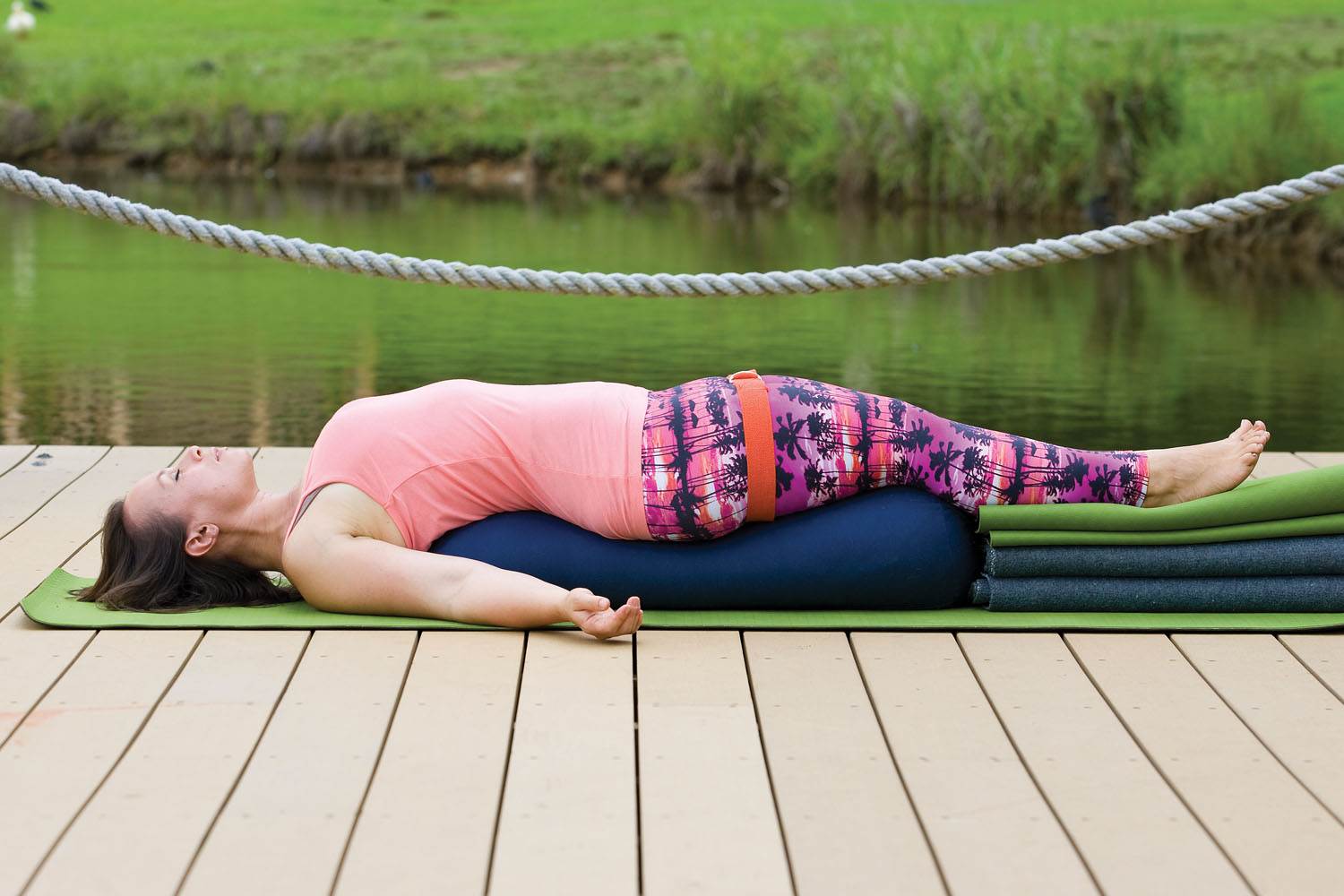
Lie on your back over the bolster and blankets, positioning yourself so that your mid-back presses into the back of the edge of the bolster and your head and neck rest on the floor, legs and torso lying straight along the length of the bolster and blankets as shown. Allow your arms to rest at the side, in towards the bolster, palms of the hands facing up. Close eyes, breathe and relax.
After a few minutes, remove the strap and all props from your yoga mat, and lie flat for a few minutes more, breathing in restful, peaceful awareness.
Now you’re ready for the thrill of the ride, with equipoise and freedom of movement throughout your chest, shoulders and upper back.

